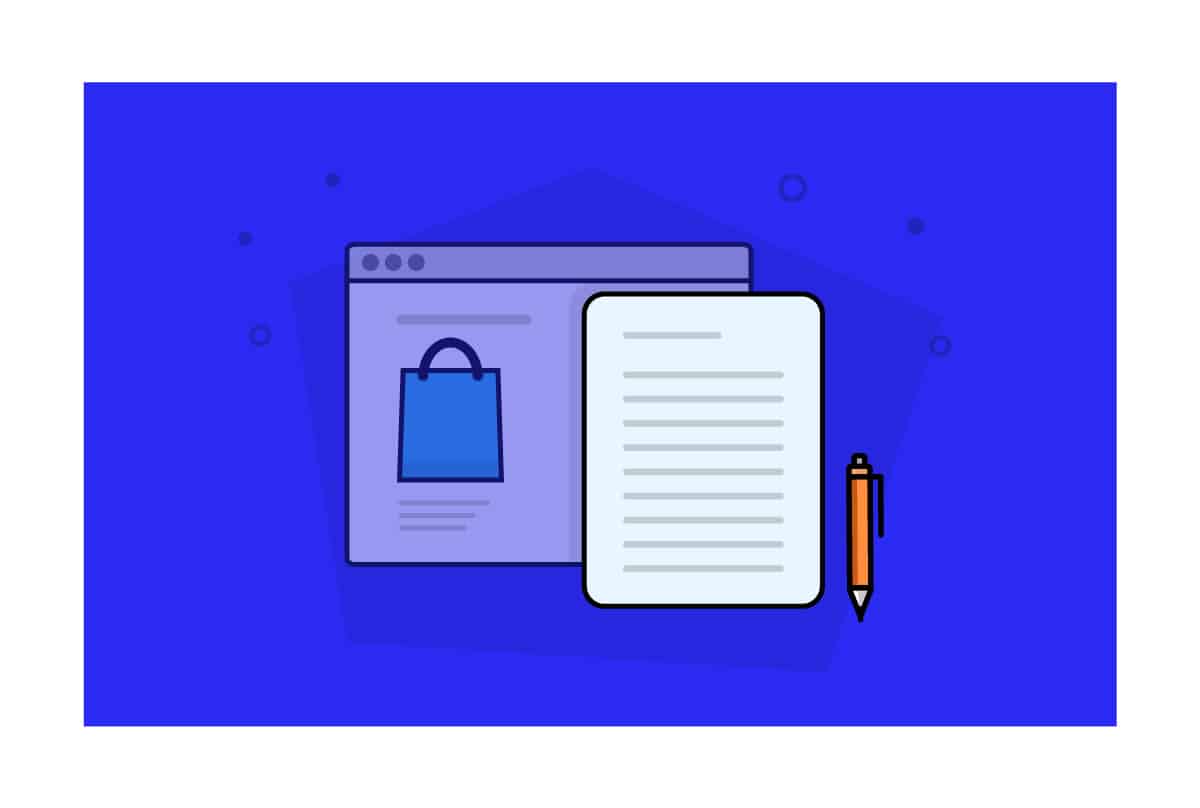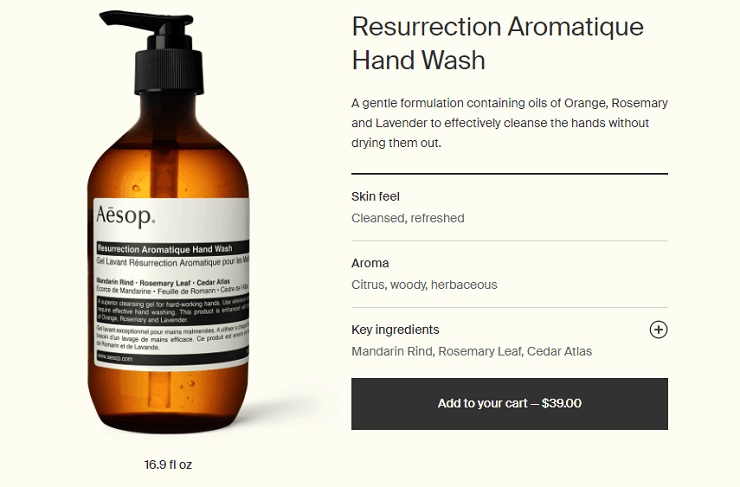There’s a critical element you can put to work in your ecommerce copywriting, that when done right can double a product’s sales. To understand how it works, our story begins with cheese.
A University of Vermont study on cheese consumption and buying habits, found that there are generally two groups of cheese consumers: those who are price sensitive, and those who are quality sensitive. The results showed that the quality seekers were willing to pay between 15% and 25% more for each in a series of attributes, such as organic, artisanally made, locally produced, etc.
Add that up, and a cheese with all of these attributes could sell for about twice as much as a cheese with none of them.
Aside from the fact that cheese seems like a good business to be in if you live in Vermont, the key concept here is the value of a product’s provenance—its origin story or how it came about. If you’re producing a high-quality product, using provenance in your marketing copy could allow you to charge twice as much.
Oh, and the study found that even the price-sensitive group was still willing to pay more for cheeses labeled as local.
But you don’t have to have a dress worn by Marilyn Monroe or a limited edition vintage pinot noir from Burgundy to increase ecommerce sales using provenance. In fact, no matter what your product is, it already has an origin story just waiting to be told. The challenge is to find that story and tell it well.
FREE Masterclass: The Genius “10-Step Copywriting Framework” Behind 11 Different 7-Figure Launches
But Wait, Isn’t the Story All About Our Customers?
A quick clarification on storytelling in marketing before we go further, for those familiar with the StoryBrand framework and other advice that says, “Your customer is the hero and the story is about your customer, not you.” First, that’s true. Your main marketing messages should revolve around your customer, and the ways you can uniquely equip, help, and serve them.
But at the same time, in ecommerce copywriting you’ve still got to tell about the actual things you’re selling. Like it or not, some of the copy is going to be about you and your wares. So it makes sense to leverage that space to create stories that customers admire, respect, and on some level, want to be a part of.
Here’s a quick visual for how this would likely play out in your marketing:
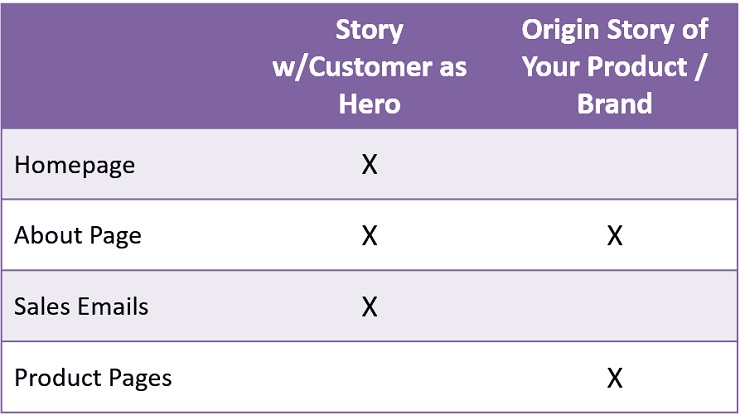
Why Provenance In Ecommerce Copywriting Has Power

As competition tightens and already packed marketplaces gain more and more momentum, it can be tempting for smaller makers to give way to clinical keywords and neglect the element of romance copy.
As Seth Godin says in This is Marketing, “People don’t want what you make. They want what it will do for them. They want the way it will make them feel.”
When we’re selling products, not only is our copy not about us, it’s usually not about the product either! It’s about the outcomes your customers will be able to achieve once they have your product in hand.
If you’ve done any study of product copywriting, then you’re familiar with the benefits vs. features distinction. We’ve got to drive home the benefits, not just list the features, if we really want to coach our customers to click “buy.”
But that doesn’t mean there isn’t room for an origin story. In fact, sharing the provenance of your products can create the essential emotional connection necessary for converting customers.
Studies show that humans make 70% of decisions based on emotion. That includes buying decisions. Now before we all run off and write fluffy lovey-dovey copy and delete the facts and figures from our sites, know that giving logical reasons for people to buy is still important.
After all, even though we can emotionally want an item, having facts to back up that decision makes us feel better about the purchase.
Both facts and feelings play a role in sales.
Now, let’s be clear—people care much less (or not at all) about the history of commodities like generic brand paper towels. But for many products, including some provenance in your copy can make a world of difference.
It’s more obvious in some industries. For example, if you produce high-end skin care, you might already be sharing where you sourced the organic lavender. If you sell luxe leather handbags made with high-quality local leather, then you should be sharing about the farm and its sustainability practices.
But this isn’t just about luxury goods. It can be applied to any product that’s competing on anything other than price. Stated differently: if you’re not the cheapest in your category, then you should be using provenance to sell.
Knowing more about where the ingredients and materials of products come from makes me feel better about spending a couple extra bucks on your hand soap brand vs. the Equate version. It plays into our natural inclination to use facts to back up our emotional decisions. I might know at a core level that both Method soap and Equate soap will do the basic job. I’m also naturally drawn to the design and aesthetics of the Method bottle. But I’m not going to pay more just because it has a pretty bottle. I need reasons to support the decision I’m already making in my heart.

For those who are most quality sensitive and/or hype sensitive, there’s Aesop, which comes in at $39 for 16.9 fl oz, or 21 times more expensive than Up & Up. Without going deeper into the differentiation, look at each product’s name. As the price goes up, so does the sophistication of its name.
Let’s dive into three distinct ways you can incorporate origin story and provenance into your ecommerce copywriting campaigns.
3 Places You Can Use Provenance in Your Ecommerce Copy
1. Your Brand’s Origin Story
For entrepreneurs, it’s a no brainer to start with your company’s genesis. Often, the founder is the “original customer,” so it might bridge the gap between a brand story and customer-as-hero story.

FREE Masterclass: The Genius “10-Step Copywriting Framework” Behind 11 Different 7-Figure Launches
As we often discuss in sales and marketing, the story of solving a lifelong aggravation, and then developing that solution for sale is a powerful way to connect with new customers.
But developing products for pleasure still makes an engaging founder story when you get into the why and how behind the scenes.

If you think your product is too simple, too straightforward or mundane, then think again and take a look at Harry’s razors brand story.

Consider telling the story of the gap you saw in the market, and how you’re providing a staple, but in an ever-so-slightly different way than any current competitors.
Daniel Burstein of MECLABS advises:
We need to learn a lesson or two from Hollywood magic and tell the back story. Show the 18 months it took computer programmers to lovingly create every hair on the cartoon princess’s head. Let’s see Marty McFly being hauled all over downtown “Hill Valley” by wires attached to a crane. Let the people know they’re getting their money’s worth when they choose your premium option.
For more on telling powerful brand story, and how to increase ecommerce sales, see Bryan Lyng’s Foundr piece on the topic.
2. Stories About Your Products
So maybe your product is brand new, made in a factory in the Midwest. Maybe it’s mass-produced, or you’ve outsourced all the design. That doesn’t mean your product can’t have its own story. You’ve just got to imagine it.
Take the J. Peterman Company as an example (yes, it’s real! Not just a fiction from Seinfeld).
And when put into a typical product page, it might look something like this description for the “1959 Dress”:
This copy appeals to a very particular customer. Probably not one who’s in a hurry. Or one who wants to make sure they look current. But talk about conjuring a story for your product. Just make sure any fictional elements are clearly fictional, as you never want to mislead a customer.
It’s not just for old-timey catalogs though, Patagonia creates stories around it’s products with videos on it’s product pages. While the narration for the Hose-Down Slicker Jacket lists the benefits and unique properties of its clothing, the video shows a fisherman going through his day in the jacket—clearly showing how it functions in real life, within the context of a simple storyline.

There are smaller ways to integrate stories into your product descriptions, too. Athleta demonstrates this by simply telling you what an item is “for,” thus inviting you to imagine scenarios where you’d find the piece of clothing valuable.
And just as an entire brand has an origin story, individual products can have their own origin stories too. While these stories can add valuable provenance, keep in mind that they can also detract from providing customer value up front if they’re too self-involved or irrelevant to the actual product benefits.

3. Highlighting Materials and Processes
One of my clients was concerned that she didn’t have a bigger “why” behind her business, aside from wanting to create a career that allowed her to set her own hours and do work she enjoys. Even though those reasons for wanting to start a business are 100% valid.
If you’re in this boat, you don’t need to make up a super-creative, well-plotted origin story to put on your about page. Look for other stories that live within your brand and share those.
● What’s the unique personal story that led you to develop this product?
● How is this product manufactured?
● Is it made with special equipment, in a special place, or stored in a certain way?
● Where do the materials come from? Are they all from the same area? Are the ingredients organic?
● Have you or your suppliers implemented more sustainable practices that set you apart in your industry?
● Where do you get your inspiration and ideas for small design details and color palette?
● Who actually manufactures your goods? Do you have a special group of product testers?
If you don’t have any great ideas after going through that list, don’t panic. But do take a moment to revisit your USP. If you’re trying to compete on anything other than price, it’d be wise to see if you can curate an origin story for your products.
One reason you might get stuck is feeling like nothing about your business is completely new or unique. And that’s likely true—it is very rare to have a product offering that’s one of a kind. Usually you’re working within an existing product category, using materials and processes that are similar, if not the same, as all of your peers.
Your materials can be a rich source of potential stories. And one that many niche luxury brands cash in on. Explaining what makes the building blocks of your product better helps customers see why your finished product is worth a higher price. Shinola knows the importance of sharing the origin of its watchband materials.

Claude Hopkins, one of the forefathers of modern advertising, ran into this very situation with one of his clients, Schlitz Beer. There was nothing about their process that was unique to their company, but when they gave Hopkins a tour of their factory, he found advertising gold. By highlighting industry standard procedures no other beer company was talking about, he scored a profitable campaign for Schlitz.
He tells the story in My Life in Advertising: “I told a story common to all good brewers, but a story which had never been told. … Schlitz jumped from fifth place to neck-and-neck with first place in a very few months.” He continues, “Again and again I have told simple facts, common to all makers in the line—too common to be told. But they have given the article first allied with them an exclusive and lasting prestige.”
Beekeeper’s Naturals highlights their production process with a simple outline that’s everywhere from their homepage, to their shipping boxes. It’s quite similar to any honey/bee product harvesting process, but by naming it the BKN method and illustrating it, they’re showing the value it provides.
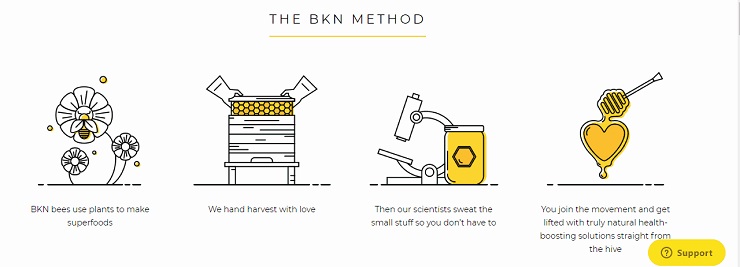
A note for makers: are your products handmade? Then share that proudly! A study in AMA’s Journal of Marketing found customers were willing to pay 17% more for items marketed as handmade. The so-called “handmade effect” is most powerful when people are buying gifts for close loved ones, so if your products are giftable, be sure to let your customers know the extra care that went into creating them.
Other product stories could include:
- The times your customers come back and thank you for creating products that make their lives easier, or help them create memories with loved ones
- That one ingredient you had to travel the world to source for your product
- All the rounds of testing it took to get your prototype just right, because you knew your customers deserve the best
If you keep an open mind, you’re bound to find a treasure trove of stories already living within your brand.
Of course, these stories don’t stand alone. Rather, they build on and support each other as the building blocks of your brand’s personality. And lest you think personality is a nice-to-have that doesn’t have ties to revenue, think again.
A study in the Journal of Hospitality and Tourism Technology surveyed over 400 online shoppers and found that website personality influences both utilitarian and leisurely browsing, which in turn, tend to increase online impulse buying.

There are a million ways to showcase provenance and story in your brand. Schedule some time this month to sit down and think through the stories you can tell in your copy.
FREE Masterclass: The Genius “10-Step Copywriting Framework” Behind 11 Different 7-Figure Launches
Ways to Increase Ecommerce Sales by Leveraging Provenance
Three closing thoughts on implementing provenance in your marketing:
1. Remember, your business is ultimately about your customer.
Your origin story is only powerful if your ideal clients connect with it. So do your research: get to know your ideal customers and what they value. Then use provenance techniques to highlight those aspects of your company that your market will most appreciate. Sharing your origin story is not a replacement for highlighting the benefits and outcomes your products provide.
When it comes time to publish, remember this from Nick Usborne at Marketing Experiments:
As marketers we can’t look at me-too products and try to improve their brand images simply by concocting stories. The brand is not what you say about a product or service. It’s about what the product or service IS. And, of course, it has to tap into what buyers actually WANT.
And if you don’t know what customers want, then it’s time to dig in and figure it out.
2. Combine provenance with other persuasion principles.
Get multiplied ROI when you use provenance and origin copy combined with classic persuasion principles like scarcity, urgency, and authority. And whenever you’re writing ecommerce product descriptions, there are four essential elements to include. A great resource for learning more about seven potent elements of persuasion is Robert Cialdini’s classic book Influence.
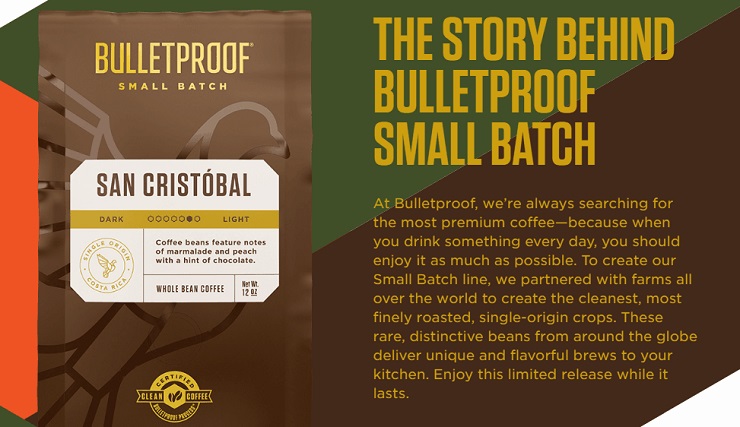
And don’t overlook the importance of design. When it comes to ecommerce, copywriting and layout work hand in hand to produce a seamless ecommerce shopping experience. If you’re wondering how to get ecommerce sales, The Ultimate Guide to Boosting Conversions With a Powerful Ecommerce Store Design is a great starting point.
3. Be honest.
While learning about ways to increase ecommerce sales is great, no marketing technique should ever be used to trick or manipulate your customers. Maintaining empathy and authenticity is absolutely essential. Daniel Pink gives an easy way to remember this in To Sell is Human:
In every encounter, imagine that the person you’re dealing with is your grandmother. This is the ultimate way to make it personal. How would you behave if the person walking into your car lot wasn’t a stranger but instead was Grandma? … By removing the cloak of anonymity and replacing it with this form of personal connection, you’re more likely to genuinely serve, which over the long haul will redound to everyone’s benefit.
And ultimately, that’s what we’re in business for—to create something that benefits everyone.
Optimizing your product copy can seem overwhelming at first. But it doesn’t have to be all or nothing. It’s OK to start slowly, and build from there. Comment below with one element of your product’s provenance that you can use in your product copy.
